Plans have an important role in our daily lives, without even realizing we are always making plans in order to achieve the desired outcome. “I will cook a steak for dinner”, “I want to finish reading this book”, “I am going to meet my parents this weekend,” etc. these are all small plans of our daily lives. Naturally, a complex and multi-perspective endeavor such as Project would also require a planning process. Without a proper planning process, you can not manage the project. In this blog post, we are going to review the reasons, the outcomes and the types of project planning process.
Attend our 100% Online & Self-Paced One-Hour Free PMP Training.
In our online PMP training, you will find more details. Also, you can check out the PMP Bundle to get enrolled all the PMP related courses.
The Role of Planning Process in the Project Life Cycle
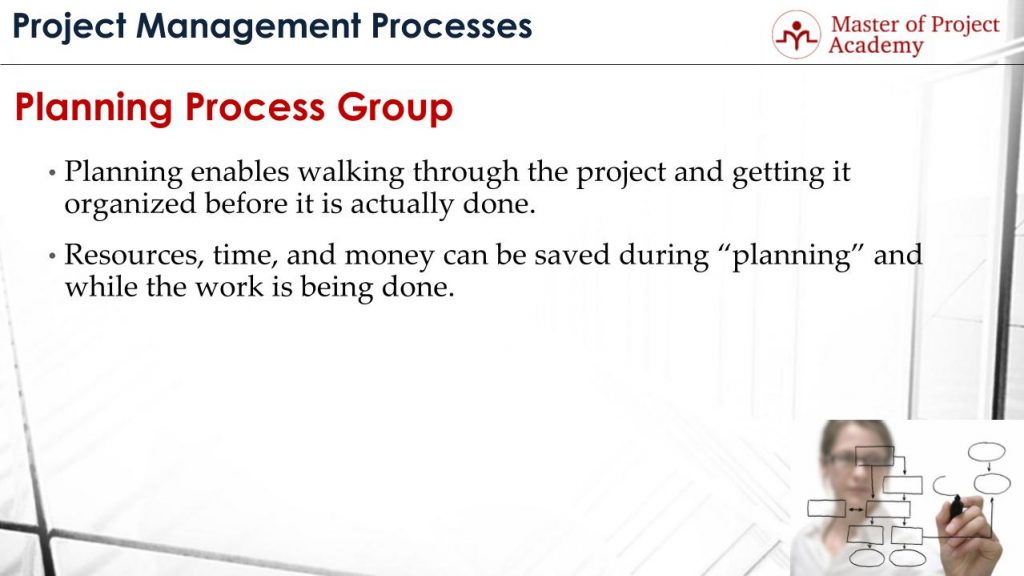
In the project life cycle, the this process comes after the project initiation. It ensures the healthy planning of the project to guarantee successfully meeting project objectives. Planning process enables walking through the project and getting it organized before it is actually done. So during the project this process, for each task, cost estimate, schedule estimate, interdependency with other tasks etc. are analyzed and an overall plan is produced. This gives an indication of what will be the overall budget of the project, duration of the project etc. By this way, regarding allocations are ensured within the company.
What is done?
Resources, time, and money can be saved during “planning process” and while the work is being done with the help of planning. Because planning process ensures what you will need when. For instance, with the help of planning, you will have an overview of when will the testing start and you can negotiate with the test department manager accordingly to allocate test engineers when the time comes to testing in the project.
What is the result?
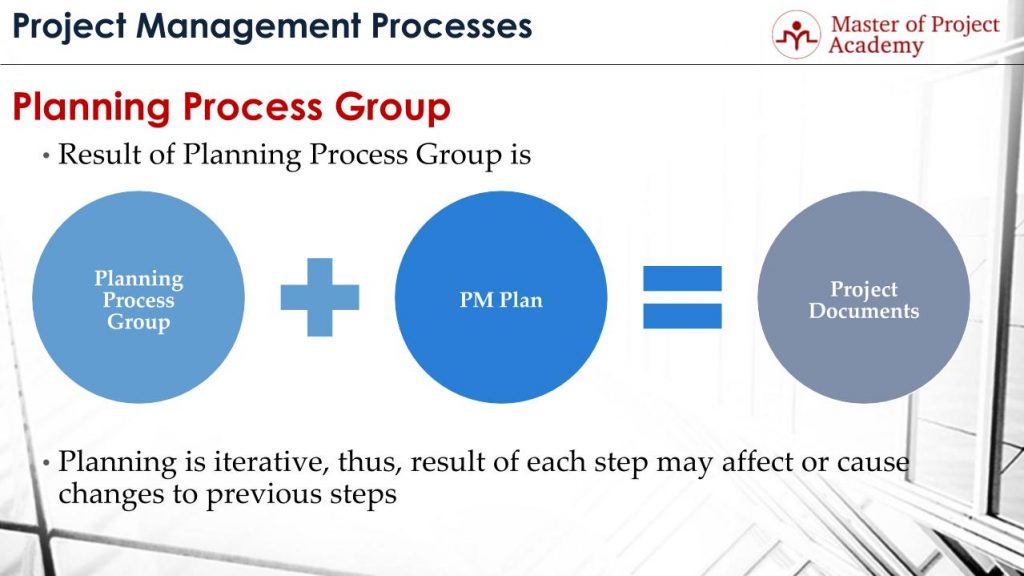
Result of the project planning process group is project management plan and project documents. Note that, project management plan includes several other plans such as cost management plan, schedule management plan, quality management plan etc. And these plans include detailed guidelines on how to manage different aspects of projects.
The planning process is iterative, thus, the result of each step may affect or cause changes to previous steps. Let’s consider that you have two activities in your project. The first activity is 5 days, and second activity is 7 days. And the second activity is dependent on the first activity, it cannot start before the first activity is finished. And let’s assume that first activity is completed with a delay in 8 days. This will affect the start date of the second activity and revision and reiteration of the plan respectively.
What is the Importance of Risk Analysis and Risk Management in Project Planning Process?
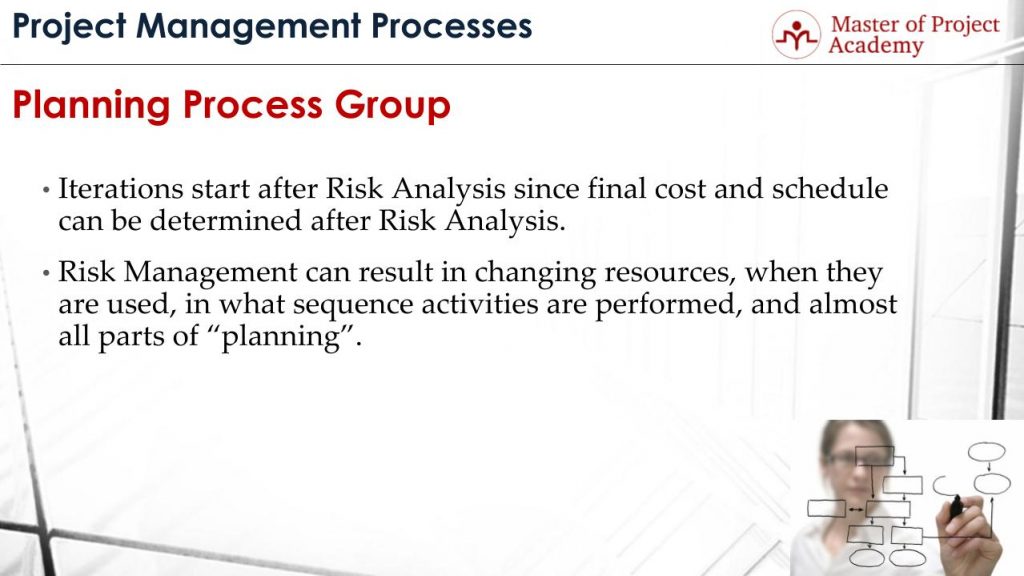
Iterations start after Risk Analysis since final cost and schedule can be determined after Risk Analysis. Because each risk has an associated cost to overcome the impacts of the risks once they occurred. And these costs are planned and accommodated during the planning process, in the budget of the project.

Risk Management can result in changing resources, when they are used, in what sequence activities are performed, and almost all parts of “planning process”. Because, based on the risks of the project, alternative and optimum solutions to minimize the occurrence possibility of risks need to be generated. And this causes changes in planning respectively.
Two Types for Planning Process
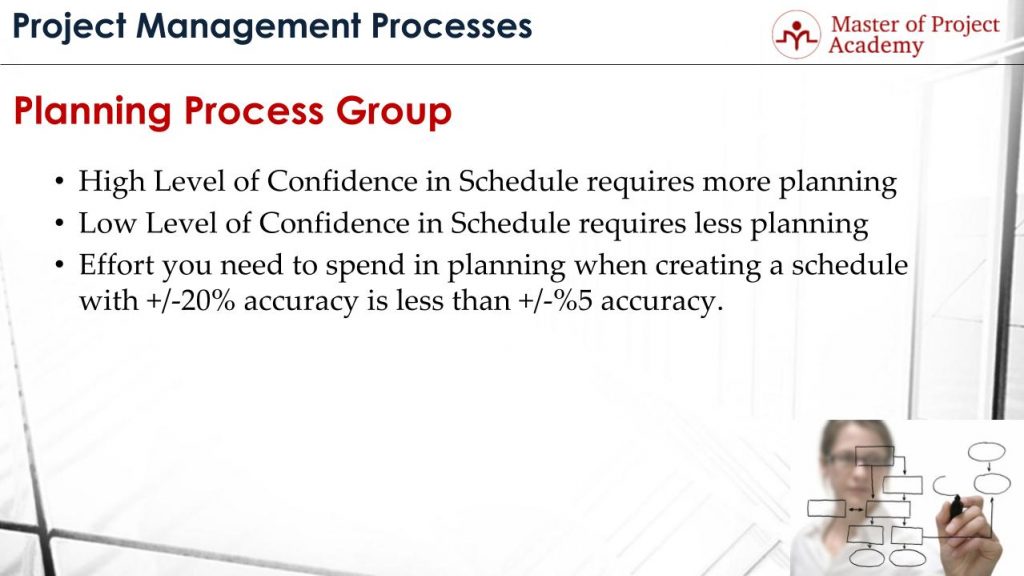
During the planning process, High Level of Confidence in Schedule requires more planning and Low Level of Confidence in Schedule requires less planning. This means, if you want to prepare a more accurate and precise plan that will have little variances, this will bring higher and more detailed level of planning. Because precise estimations can be done only by spending more time on planning.
For instance, the effort you need to spend in planning when creating a schedule with +/-20% accuracy is less than +/-%5 accuracy. Therefore, depending on the accuracy level you need, an appropriate time for planning needs to be organized.
What is the definition Rolling Wave Planning?
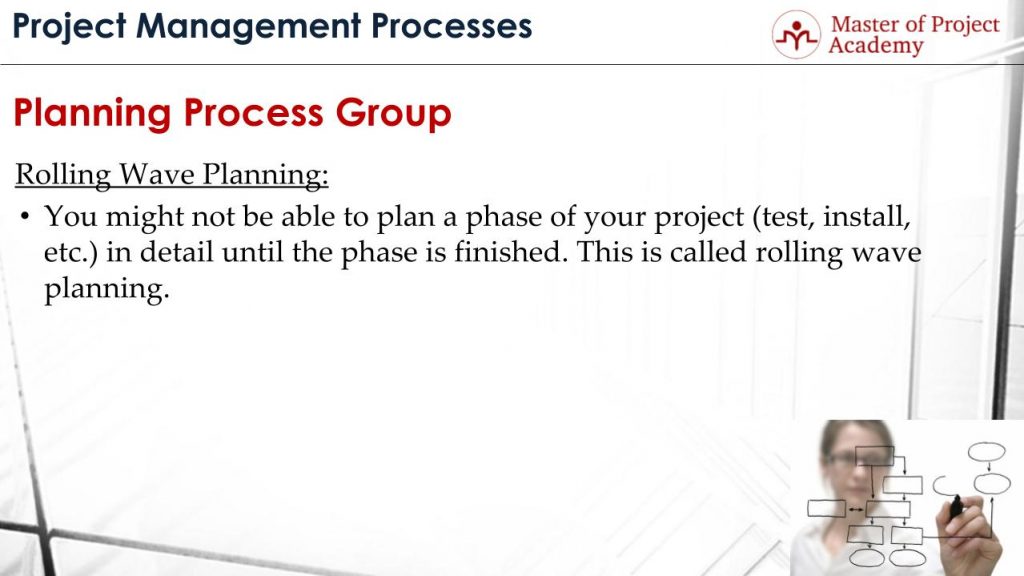
Rolling Wave Planning is applied in the project management planning process. You might not be able to plan a phase of your project, for instance, testing phase, installation phase etc. in detail until the phase is finished. And until you complete all of the project activities, based on the actual results of the project, you need to revise the future activities of the project accordingly. And this is called rolling wave planning.
Who is involved in the planning process?
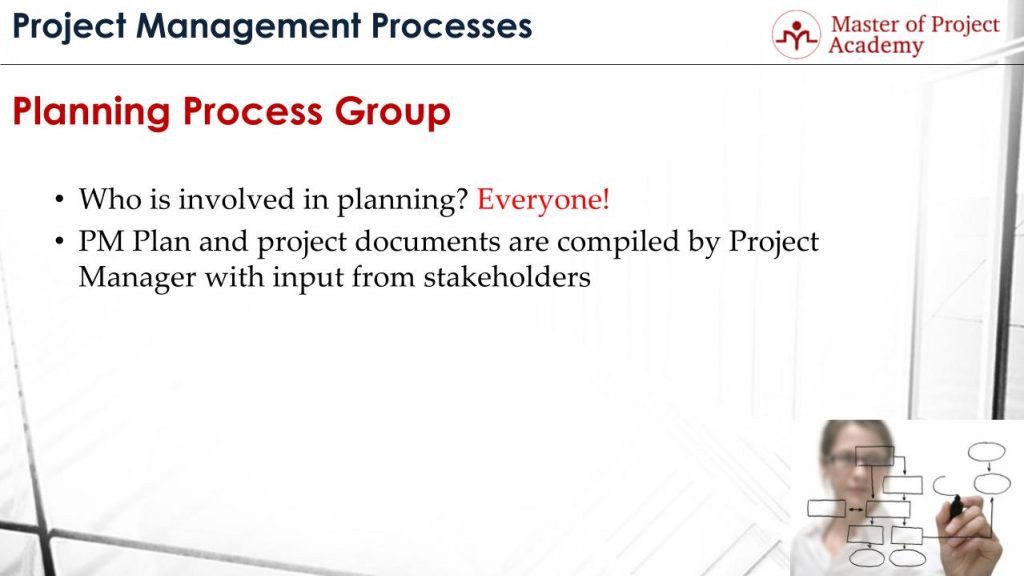
Everyone! During planning process of a project, each stakeholder might provide inputs. And these inputs must be evaluated by the project team to develop an overall project plan. While the inputs during planning process come from stakeholders, Project Management Plan and project documents are compiled by the Project Manager. So, the role of the project manager is being accountable for the development of the project management plan.
What are the reasons for starting planning process?
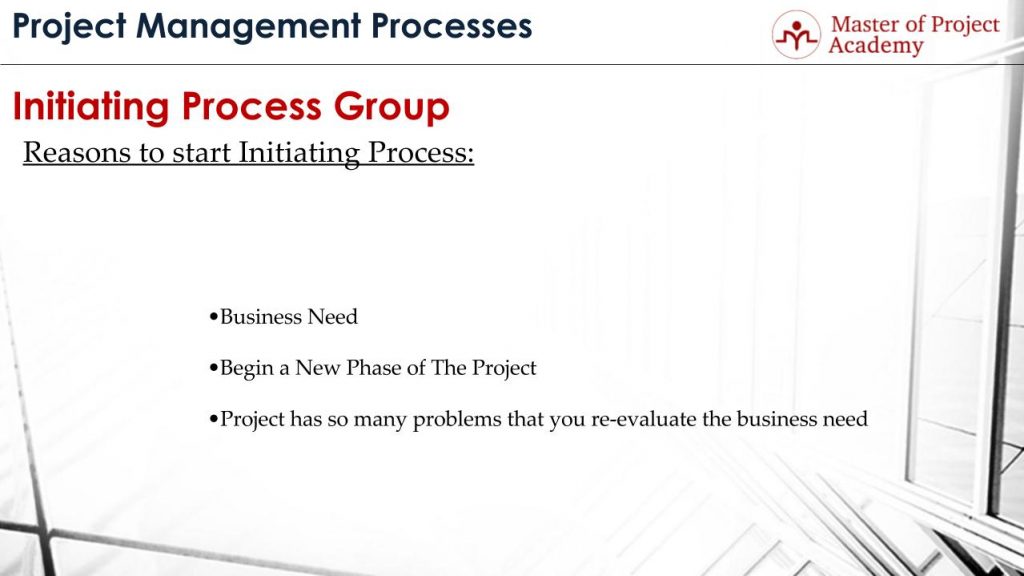
There are two main reasons to start planning processes in a project:
- The first reason can be the project initiation activities have been completed and planning process of the project can start.
- The second reason can be changes, corrective and preventive actions might require re-planning. For instance, if there is an approved change, the impact of this change on the project is reflected to cost management plan, schedule management plan etc. Because with the new change, it is very likely that the overall budget of the project will increase and project duration will increase.
Corrective and preventive actions might require another planning process, meaning re-planning as well. Corrective actions are taken to rectify a deviation or problem occurred in the project. Preventive actions are taken to eliminate any risks that can impact project in a negative way. So the main difference of corrective and preventive actions is; corrective actions are taken to fix an occurred problem while preventive actions are taken to minimize the occurrence possibility of a negative risk. And both corrective and preventive actions might re-planning in a project.
When the planning process is completed, the Executing Process Group begins in the project life cycle.
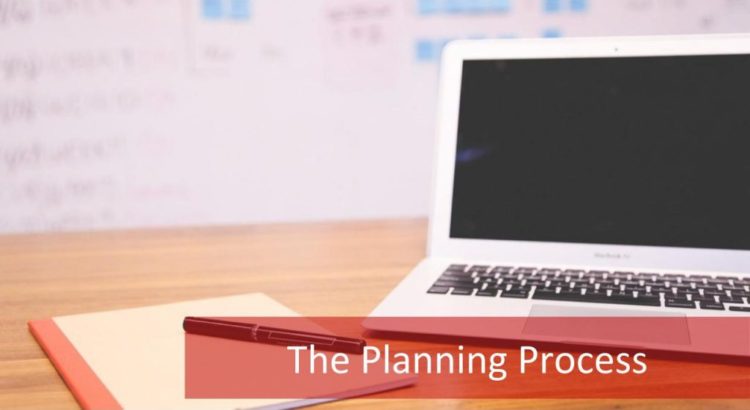


Superb !! thanks for great article.
Your welcome!